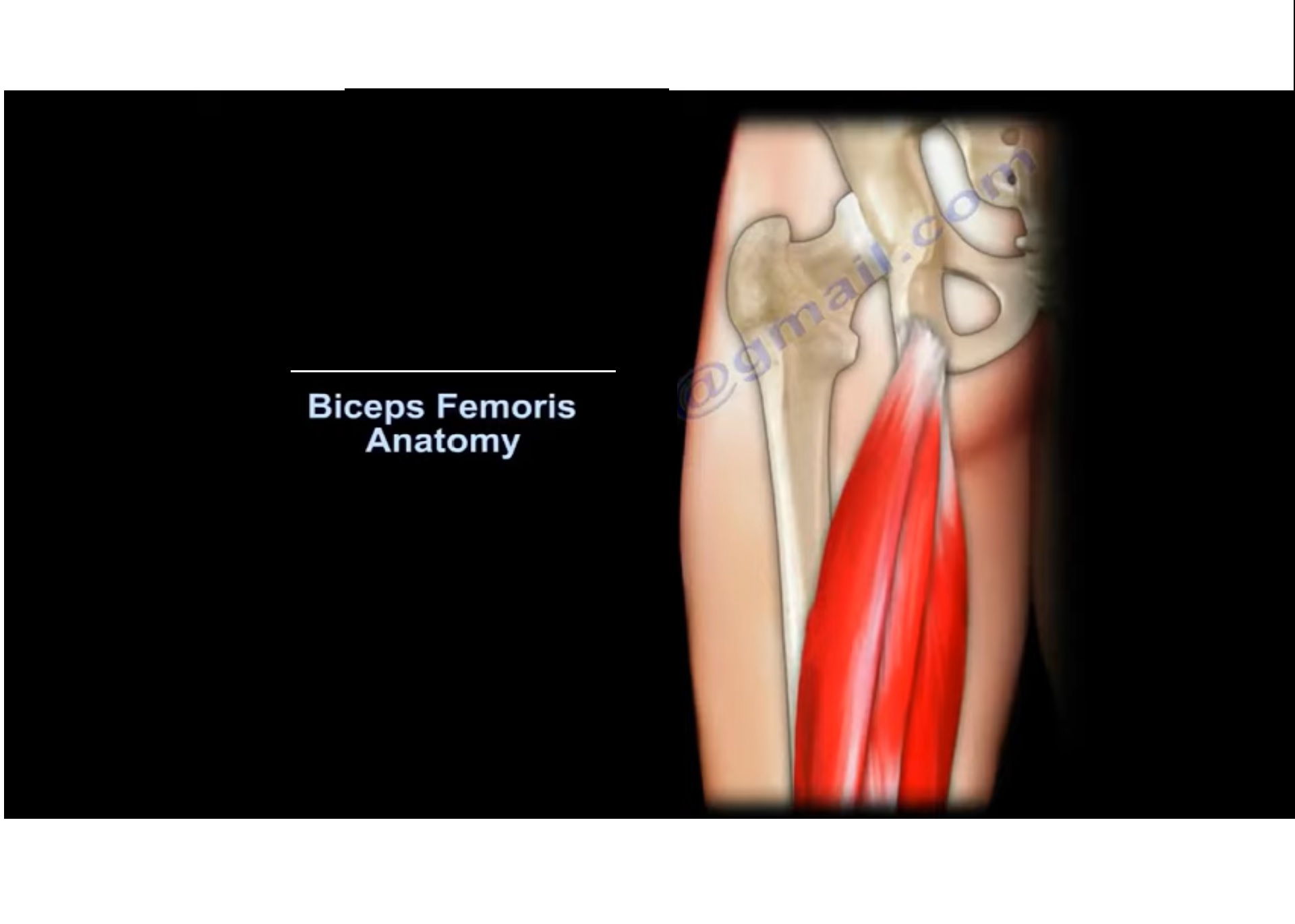Courtesy: Prof Nabil Ebraheim, University of Toledo, Ohio, USA
Anatomy of biceps femoris
- It is one of the three flexor muscles (hamstrings) of the posterior thigh. It has two heads.
Origin:
- Long head arises from the upper and medial part on the back of the ischial tuberosity.
- Short head arises from the lateal lip of the linea aspera on the posterior femur.
Insertion:
- Both heads of the biceps femoris are inserted into the head of the fibula along with the lateral colateral ligament and the posterior popliteofibular ligament.
- The insertion of the structure from anterior to posterior on the fibular head: lateral collateral ligament-
popliteofibular ligament- biceps femoris tendon-(most posterior structure on the fibular head)
Nerve supply:
- Long head is innervated by the tibial branch of the sciatic nerve(l5,s2)
- Short head is innervated by the common peroneal branch of the sciatic nerve(l5 ,s2)
Arterial supply
- Perforating branches of the inferior gluteal artery
- Profunda femoris artery
- Popliteal artery
Functions:
- Flexes the knee joint and laterally rotates the knee joint when the knee is flexed.
- Long head of the biceps femoris extends the hip joint.
Hamstring injuries
- The upper medial portion of the ischial tuberosity is where the insertion of the biceps femoris and semitendinosus is located.
- Injury usually involves the myotendinous junction 12cm distal to the ischium.
- Complete rupture or avulsion from the ischial tuberosity may also occur. complete ruptures usually needs repair. If not repaired the rupture will lead to significant functional impairment which is more profound during vigorous activity.
Sciatic nerve injuries
- High sciatic nerve lesions can mimic peroneal neuropathy at the fibular head.
- The patient in both conditions will have foot drop, so we don’t know if the lesion occurs from the common peroneal nerve at the knee level or if it occurs at the higher level from a high sciatic nerve injury.to distinguish between we do EMG,
- If there are EMG abnormalities in the short head of the biceps femoris muscle, then this injury is a high sciatic nerve injury. but if we find that the short head of the biceps has no EMG changes then the lesions occurs from injury to the common peroneal nerve at the fibular head.

Leave a Reply